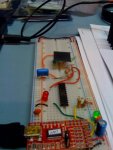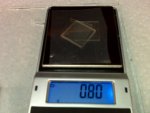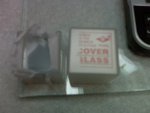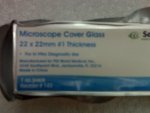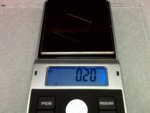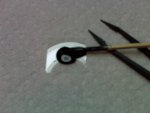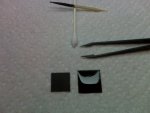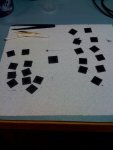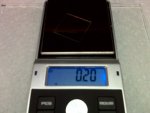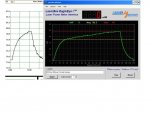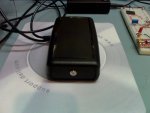RayBurne
0
- Joined
- Jun 9, 2011
- Messages
- 46
- Points
- 0
H = Heat / E = Energy / A = Analysis / T = Temperature
This thread is being open to post some results of experiments that I have conducted and to present some ideas to the community. I hope to pass on some interesting results, perhaps get some interests from others to carry out some experiments, and share all of the information to the community. In my usual way, I'll try and back it all up; but I cannot do it in one day, so I hope everyone joins in but understand that somethings take a weebit of time.
If I shouted, "Lets burn something!", I bet a long line would form behind me. No matter how serious you may be about lasers, even the most serious of us has probably pointed our laser at something just to see if we can smoke it! Of course, the smart ones were wearing their laser eye protection at the time. To come out of the closet, I must admit that even as a serious experimenter and engineer, I did take out a few corner spiders in the vaulted bedroom recently.
So, our intuition tell us that a laser can produce heat, things smoke, balloons pop, flash-paper flashes, and so on. We also know that the heat is produced by the energy of the photons from the laser being absorbed by the target material. Essentially, the absorbed energy is turned into heat and the object temperature rises.
For those of us lucky enough to have an LPM, we can measure the energy in the beam either by kicking some electrons out of their orbits in a photodiode or by heating a black surface on a thermopile. Q: Who invented the first thermopile and when? A: If you get this right, you get to come to the head of the class, the instrument was invented in 1878 by the American astronomer Samuel Pierpont Langley.
I have one of the LaserBee USB devices and while sensitive to my body temperature and air currents in my lab, I'm pretty sure that it will not work as a moo-detector at 1/4 mile.
In one of the threads here on LPF, one of our members said that building a home LPM was a 'chicken and egg' project... you still needed a LPM to calibrate the device, regardless if thermal or silicon detector. True to a point, but how did the first LPM get calibrated? Back then, the National Bureau of Standards used a device called a calorimeter to determine the laser output power: nvl.nist.gov/pub/nistpubs/sp958-lide/178-180.pdf This is a good read, but if you are not so inclined, let me summarized by saying that NBS essentially shot a pulsed laser into a dark liquid (they used ink) and measured the temperature rise with thermocouples. Basic physics. Compare this to my LaserBee where I shine the laser on a special black coating and heat a thermopile... essentially, after all those years, we are still heating things! If you are still with me and want to know more, get one of those old physic books down from the shelf and read about how the calorimeter works... or do a "google" on the term.
We can extrapolate the concept of the calorimeter to the basic idea: a constant mass, a specific heat capacity, and temperature difference. If the mass also acts as a blackbody object, then energy absorbed is radiated in one of three ways: conduction, convection, or radiation. If conduction and convection are minimized and radiation is the predominate component, then we have a way of measuring energy directly as a temperature. Yes, I have read the articles in LPF and even performed the experiments last year and while I could not independently verify the magic ratio, the experiments seem to be repeatable which gave me a little comfort that something was working correctly.
The experiment:
1) I took a microscope slide coverglass and coated it with a carbon film coating. Each slip is 0.14 grams and when coated, they weigh 0.22 grams. I did a bunch and they all came out the same weight. We now have a known mass that can easily be repeated.
2) I built an extremely accurate (0.02 degree Kelvin) IR thermometer. I've entered this into Instructables Technology microcontrollers contest: A PICAXE Infrared "logging" Thermometer
You can build one easily... code is open source and the part count is minimal.
3) I put new batteries in my laser pens and charged all the rechargeable lasers. I ran a full suite of tests graphing the results on my LaserBee. I put in new batteries and recharged and ran another set of tests on the painted coverslips measuring the temperature rise above the room temp. The output of the PIC directly fed into the PC and graphed. Just like with the LPM, all tests ran a minimum of 30 seconds or until the laser reached peak power after which time I turned the laser off and allowed the power/temp readings to return to the starting point of 0.000 or room ambient.
4) I stuck all of the information into Excel, plotted it, and ran a regression to fit the best curve. My R-squared value is 0.9998, which indicates a very good fit.
Results:
For a given target with a high emissivity (close to 1.0) and in a controlled environment (stable room temperature, minimum drafts, etc.) the temperature rise above ambient is directly related to the optical power of the laser. See graph.
I'll try and elaborate more in the next post. The glass coverslips were obtained from eBay. The carbon coating is a proprietary carbon nanotube product; I am attempting to obtain permission from the manufacturer to reference the product by commercial name. If you wish to experiment, use several coats of high-temperature flat black paint on both sides of the glass coverslip... you must be very consistent if you intend on being able to compare results with others. I recommend "baking" the painted coverslips to remove all of the solvents... I use the kitchen oven set at 350 (but only after the wife has left for work) - typical cook time about 30 minutes.
Errors:
For 30mw to 750mw, the maximum error was 10% for the 50mw greenie. The 5mw Red was not included in the curve fit. At 200mw for both IR and Red, the error was 0% and for the Artic (445nm) at 750mw the error is 3%. Again, the LaserBee USB 2.5W unit (2% or better) is the measuring stick in this experiment.
- Ray
This thread is being open to post some results of experiments that I have conducted and to present some ideas to the community. I hope to pass on some interesting results, perhaps get some interests from others to carry out some experiments, and share all of the information to the community. In my usual way, I'll try and back it all up; but I cannot do it in one day, so I hope everyone joins in but understand that somethings take a weebit of time.
If I shouted, "Lets burn something!", I bet a long line would form behind me. No matter how serious you may be about lasers, even the most serious of us has probably pointed our laser at something just to see if we can smoke it! Of course, the smart ones were wearing their laser eye protection at the time. To come out of the closet, I must admit that even as a serious experimenter and engineer, I did take out a few corner spiders in the vaulted bedroom recently.
So, our intuition tell us that a laser can produce heat, things smoke, balloons pop, flash-paper flashes, and so on. We also know that the heat is produced by the energy of the photons from the laser being absorbed by the target material. Essentially, the absorbed energy is turned into heat and the object temperature rises.
For those of us lucky enough to have an LPM, we can measure the energy in the beam either by kicking some electrons out of their orbits in a photodiode or by heating a black surface on a thermopile. Q: Who invented the first thermopile and when? A: If you get this right, you get to come to the head of the class, the instrument was invented in 1878 by the American astronomer Samuel Pierpont Langley.
From Wikipedia, "The first bolometer used for infrared observations by Langley had a very basic design: It consisted of two platinum strips, covered with lampblack, one strip was shielded from the radiation and one exposed to it. The strips formed two branches of a Wheatstone bridge which was fitted with a sensitive galvanometer and connected to a battery. Electromagnetic radiation falling on the exposed strip would heat it, and change its resistance, the circuit thus effectively operating as a resistance temperature detector. By 1880, Langley's bolometer was refined enough to detect thermal radiation from a cow a quarter of a mile away."
I have one of the LaserBee USB devices and while sensitive to my body temperature and air currents in my lab, I'm pretty sure that it will not work as a moo-detector at 1/4 mile.
In one of the threads here on LPF, one of our members said that building a home LPM was a 'chicken and egg' project... you still needed a LPM to calibrate the device, regardless if thermal or silicon detector. True to a point, but how did the first LPM get calibrated? Back then, the National Bureau of Standards used a device called a calorimeter to determine the laser output power: nvl.nist.gov/pub/nistpubs/sp958-lide/178-180.pdf This is a good read, but if you are not so inclined, let me summarized by saying that NBS essentially shot a pulsed laser into a dark liquid (they used ink) and measured the temperature rise with thermocouples. Basic physics. Compare this to my LaserBee where I shine the laser on a special black coating and heat a thermopile... essentially, after all those years, we are still heating things! If you are still with me and want to know more, get one of those old physic books down from the shelf and read about how the calorimeter works... or do a "google" on the term.
We can extrapolate the concept of the calorimeter to the basic idea: a constant mass, a specific heat capacity, and temperature difference. If the mass also acts as a blackbody object, then energy absorbed is radiated in one of three ways: conduction, convection, or radiation. If conduction and convection are minimized and radiation is the predominate component, then we have a way of measuring energy directly as a temperature. Yes, I have read the articles in LPF and even performed the experiments last year and while I could not independently verify the magic ratio, the experiments seem to be repeatable which gave me a little comfort that something was working correctly.
The experiment:
1) I took a microscope slide coverglass and coated it with a carbon film coating. Each slip is 0.14 grams and when coated, they weigh 0.22 grams. I did a bunch and they all came out the same weight. We now have a known mass that can easily be repeated.
2) I built an extremely accurate (0.02 degree Kelvin) IR thermometer. I've entered this into Instructables Technology microcontrollers contest: A PICAXE Infrared "logging" Thermometer
You can build one easily... code is open source and the part count is minimal.
3) I put new batteries in my laser pens and charged all the rechargeable lasers. I ran a full suite of tests graphing the results on my LaserBee. I put in new batteries and recharged and ran another set of tests on the painted coverslips measuring the temperature rise above the room temp. The output of the PIC directly fed into the PC and graphed. Just like with the LPM, all tests ran a minimum of 30 seconds or until the laser reached peak power after which time I turned the laser off and allowed the power/temp readings to return to the starting point of 0.000 or room ambient.
4) I stuck all of the information into Excel, plotted it, and ran a regression to fit the best curve. My R-squared value is 0.9998, which indicates a very good fit.
Results:
For a given target with a high emissivity (close to 1.0) and in a controlled environment (stable room temperature, minimum drafts, etc.) the temperature rise above ambient is directly related to the optical power of the laser. See graph.
I'll try and elaborate more in the next post. The glass coverslips were obtained from eBay. The carbon coating is a proprietary carbon nanotube product; I am attempting to obtain permission from the manufacturer to reference the product by commercial name. If you wish to experiment, use several coats of high-temperature flat black paint on both sides of the glass coverslip... you must be very consistent if you intend on being able to compare results with others. I recommend "baking" the painted coverslips to remove all of the solvents... I use the kitchen oven set at 350 (but only after the wife has left for work) - typical cook time about 30 minutes.
Errors:
For 30mw to 750mw, the maximum error was 10% for the 50mw greenie. The 5mw Red was not included in the curve fit. At 200mw for both IR and Red, the error was 0% and for the Artic (445nm) at 750mw the error is 3%. Again, the LaserBee USB 2.5W unit (2% or better) is the measuring stick in this experiment.
- Ray
Attachments
-
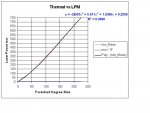 Thermal rise vs LPM.JPG47.1 KB · Views: 377
Thermal rise vs LPM.JPG47.1 KB · Views: 377 -
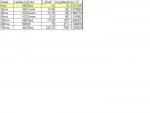 Lasers by Power.JPG31.9 KB · Views: 362
Lasers by Power.JPG31.9 KB · Views: 362 -
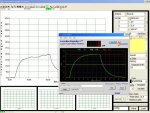 IR 200mw 808nm O-Like Pointer.JPG64.4 KB · Views: 362
IR 200mw 808nm O-Like Pointer.JPG64.4 KB · Views: 362 -
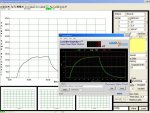 Red 200mw 660nm O-Like Pointer.JPG64.7 KB · Views: 353
Red 200mw 660nm O-Like Pointer.JPG64.7 KB · Views: 353 -
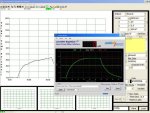 Green 30mw 532nm pointer.JPG64.9 KB · Views: 324
Green 30mw 532nm pointer.JPG64.9 KB · Views: 324 -
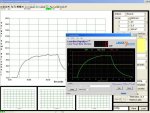 Green 50mw 532 O-Like Pointer.JPG64.2 KB · Views: 296
Green 50mw 532 O-Like Pointer.JPG64.2 KB · Views: 296 -
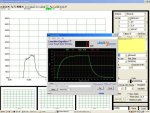 Artic 1W 445nm Wicked Laser.JPG64.5 KB · Views: 389
Artic 1W 445nm Wicked Laser.JPG64.5 KB · Views: 389 -
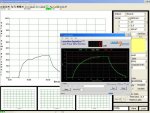 Violet 30mw 405nm O-Like Pointer.JPG64.6 KB · Views: 296
Violet 30mw 405nm O-Like Pointer.JPG64.6 KB · Views: 296
Last edited:




